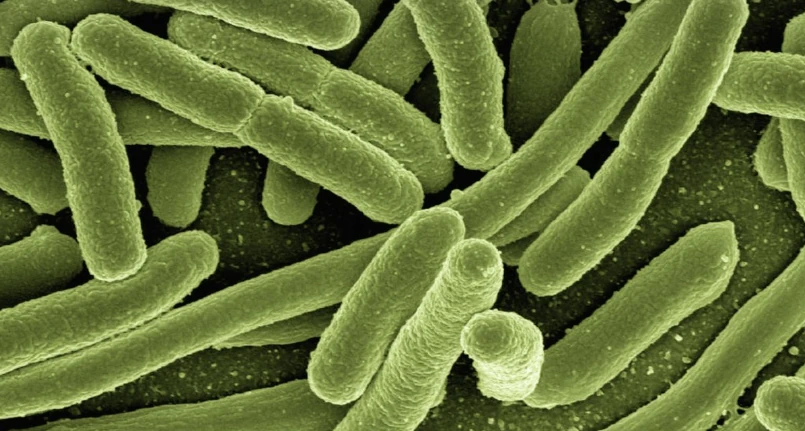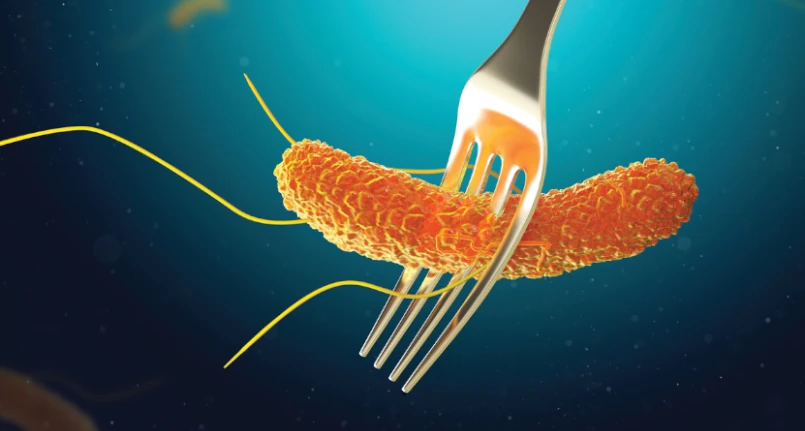Bacillus cereus is a facultative aerobic , Gram positive , spore-forming rod bacterium . Widespread in the environment, it is commonly found in the air, dust and soil.
Infection and Symptoms
Although there are several strains of Bacillus cereus – some of which are harmless or even beneficial to the human body – the bacterium is known to cause food poisoning in humans. It’s specifically its toxins to cause damage to the body, which can manifest itself in different ways:
- with nausea and vomiting , symptoms that arise from one to six hours after the ingestion of contaminated food and can last up to 24 hours → emetic gastroenteritis : preformed emetic toxins are implicated , i.e. already present in the ingested food because they are particularly resistant to heat ( such as those produced by Enterococcus faecalis ) . Only occasionally is emetic gastroenteritis accompanied by diarrhea . This type of foodborne illness can be difficult to distinguish from that caused by other short-term foodborne pathogens, such asStaphylococcus aureus
- with abdominal colic and diarrhoea, symptoms that arise from 8 to 24 hours after taking the responsible food and can last up to 24 hours → diarrheal gastroenteritis : enterotoxins synthesized by the bacterium inside the intestine are implicated . Nausea may accompany diarrhea, but vomiting is usually absent
The diagnosis must be supported by the isolation of Bacillus cereus from food , vomit or faeces , and by quantitative cultures on appropriate selective media. As a rule, however, such operations are performed for research purposes only, since the infection is relatively harmless and usually self-limiting. For this reason, antibiotic therapy is not normally necessary, while correct oral rehydration is the only important measure to adopt in the presence of diarrhoea .
In some and fortunately rare cases, Bacillus cereus can still cause septicemia and be fatal.
Infection
Among the foods most frequently involved in Bacillus cereus epidemics are dishes based on:
- cereals
- mincemeat and meatballs
- vegetables and soups
- milk derivatives
-
Bacillus cereus infection is also known as fried rice syndrome , since emetic intoxication has often been documented in subjects who had consumed fried rice dishes left to sit for hours at room temperature (for example at buffets) .Naturally, the human body is able to defend itself against Bacillus cereus infections : only when the food contains an excessive number of toxins or bacteria can these take over and produce damage. In particular, in the documented cases the suspect foods contained between 10 6 and 10 9 cfu/g (colony forming units per gram). Curiosity: in the intestine, Bacillus cereus competes with other organisms such as Salmonella and Campylobacter for nourishment and adhesion sites. In farm animals such as chickens, rabbits and pigs, some harmless strains of Bacillus cereus are used as a probiotic feed additive to reduce the overgrowth of Salmonella in the intestine and cecum . This approach improves both animal and consumer health by reducing the risk of Salmonella spp.
Although some Bacillus cereus strains are psychotrophs and can even grow at refrigeration temperatures (4-6°C), most grow between 15-55°C, with optimum growth at 30-37°C. The pH range suitable for the growth of Bacillus cereus is between 5.5 and 8°C.
As explained in the course of the article, we can deduce that:
- Bacillus cereus is a ubiquitous bacterium, which increases the possibility of contamination, to the point that the presence of the microorganism in most food raw materials is to be considered unavoidable. Soil is the main source of food contamination with Bacillus cereus spores
- Refrigeration limits the multiplication of Bacillus cereus by lengthening the germination times of the spores and the generation of toxins. Therefore, incorrect food refrigeration increases the risk of poisoning.
- Cooking at 60°C kills the bacteria, but not their emetic toxins, which can remain active up to temperatures below 100° C
- Especially in the catering sector, the pre-cooking and subsequent storage of the food at temperatures higher than those of refrigeration, for many hours before a subsequent and short cooking, increases the risk of emetic gastroenteritis from Bacillus cereus : the thermostable emetic toxin formed during the storage phase it is not destroyed by subsequent heating
- B. cereus is not a particularly acid-tolerant microorganism , so its multiplication is prevented in acidic foods , already at pH values below 4.5puddings
Prevention
To prevent food poisoning from Bacillus cereus it is recommended to:
- do not store food at room temperature
- store ready-to-eat foods, especially if rich in starch , at a temperature not lower than 60°C or not higher than 4°C; in the latter case the food must be cooled rapidly and refrigerated within two hours of cooking
- to avoid cross- contamination , use very clean pans and dishes for storage, and carefully clean the surfaces to be worked on: Bacillus cereus spores have strong adhesive properties, they can form biofilms, therefore they persist for a long time on these surfaces




